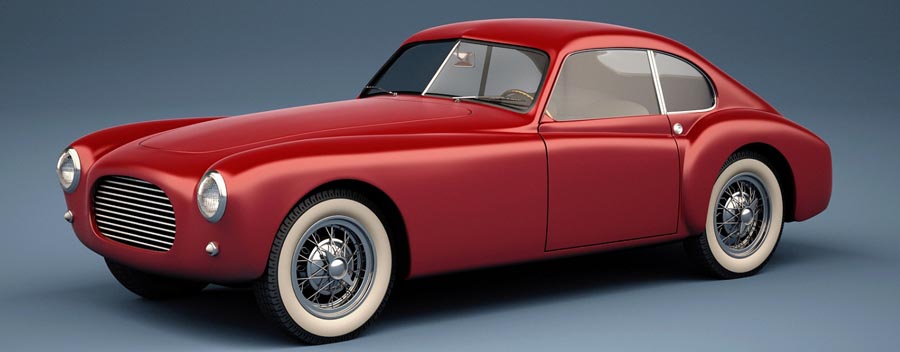
Hi Gang…
Back in 1952 when Bill Burke took a mold from Robert Petersen’s Cisitalia 202 coupe, who would have guessed that the entire process would be repeating itself nearly 70 years later. But it’s a good thing to still have some “adventures” left in life. The process of giving future generations a chance to experience a vintage 50s American Special “build” in person has always been one of our goals at Undiscovered Classics.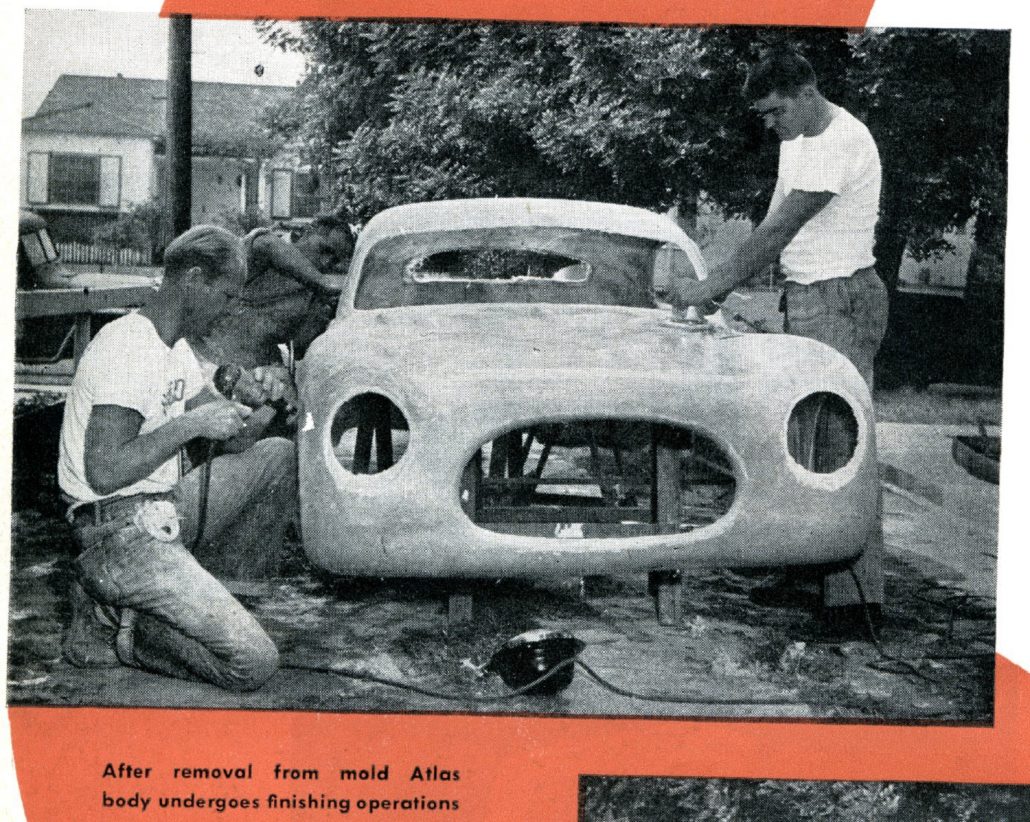
In The Beginning:
I was fortunate to call Bill Burke a friend. We first met in 2007 when he was around 90 years old. I was visiting Bill in Whittier, California to discuss the history of the Allied Swallow. During that discussion I showed him a vehicle we had just acquired – the Moon Transporter – and we needed a cool car to put on the back of it. He suggested doing a re-creation of his first belly tank. And so we did.
Burke guided our team (the build was led by Ted Kempgens) in the recreation of his first belly or “wing” tank that he built in 1946. We were honored to take this completed tribute tank to Bonneville Speedweek in 2009, with a subsequent article published by the Rodder’s Journal in 2010.
Click Here To View The Rodder’s Journal Article on Bill Burke’s 1946 Belly Tank Streamliner
Bill Burke, Don Francisco and his team went on to built a second tank based on what they learned on the first tank and this became the World’s Fastest Hot in 1948. Subsequently, their achievement appeared on the cover of Hot Rod Magazine in February, 1949.
The American Cisitalia – Coupe and Roadster:
After his first world record, Burke wanted to do it again and when he saw his boss’s acquisition (Robert “Pete” Petersen who published Hot Rod Magazine and others) of a 1948 Cisitalia 202 coupe for an upcoming Motorama show he knew he had a way.
Click Here To View How Petersen Acquired the Cisitalia in 1952 and got it to Los Angeles, California
Bill Burke told me that he saw was the streamlined shape of the Cisitalia body as a new way to claim another speed record – but first he needed to find a way to get a body. Since fiberglass was the new “wonder material” being touted in the press, he and his team became one of the first to use it to produce a sports car body in America.
Remember gang….fiberglass was the “carbon fiber” of its day. Fiberglass sports cars were the stars of any show. Fiberglass allowed one to create lightweight bodies which were easy to reproduce when compared to aluminum bodies. This represented the best way to create a new shape or in this case copy an existing one. Check out the images below from the February 1953 issue of “Modern Plastics” showing Bill Burke, Mickey Thompson and Roy Kinch with the mold and one of the first bodies and an Allied Swallow sports car produced.
World Record #2:
From the time they did the mold until setting his second world record in the fall of 1953, about one year transpired. That’s record speed for a record car! Bill Burke was an extraordinary man, and set the world’s record in his Allied “Cisitalia” Swallow in 1953 at 167 mph at Bonneville for a closed sports car. Way to go Bill!
Allied Swallow vs Cisitalia 202 Coupe:
So let’s compare an Allied Swallow to a Cisitalia. Back in 2010, we had an opportunity to bring together a field of American Specials on the lawn of the Amelia Island Concours d’Elegance. By good fortune, we had both an Allied Swallow on the field with a Cisitalia 202 coupe. Check out some of the photos of these cars below. Red = Cisitalia / Silver = Allied Swallow
Dan Palatnik’s Artistry:
We asked Dan Palatnik to help guide our work with his renderings – as we’ve done on most of our restorations. As usual, Dan hit the ball out of the park and beautifully shows the lines of the car – perfect for our upcoming brochure.
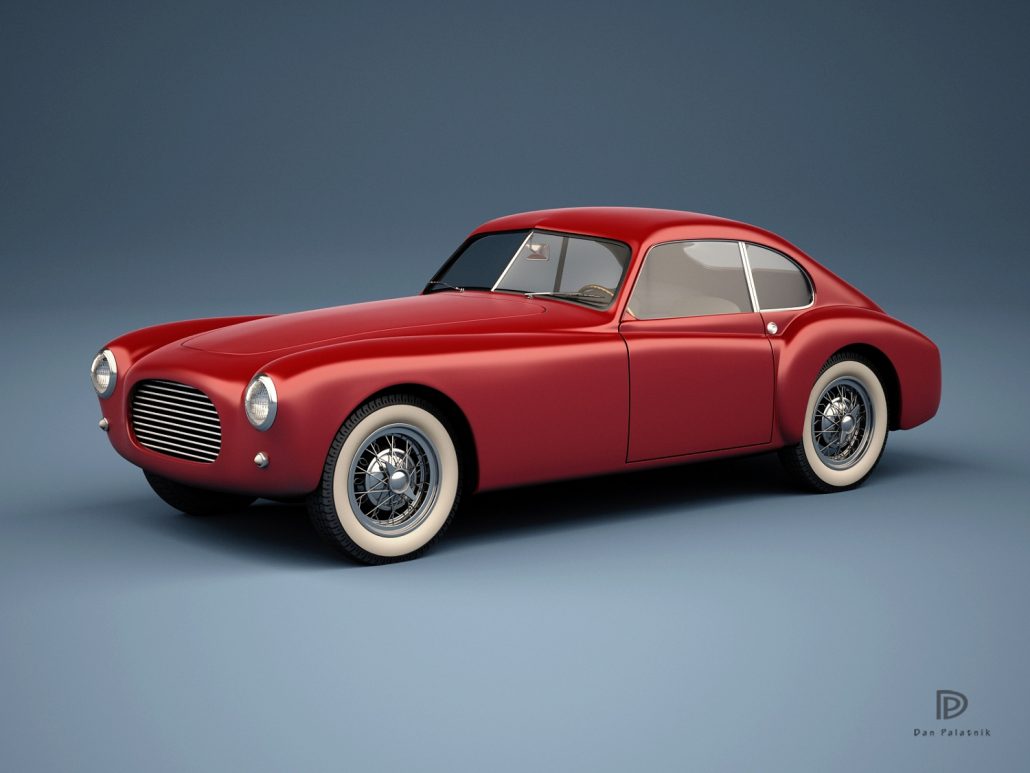
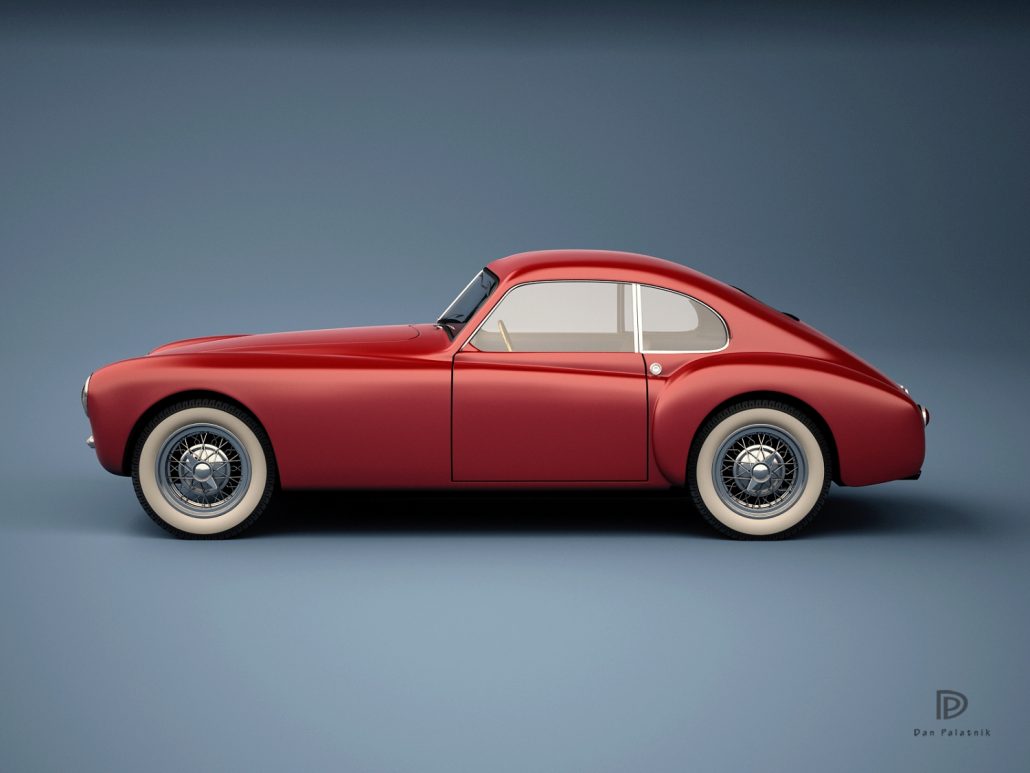
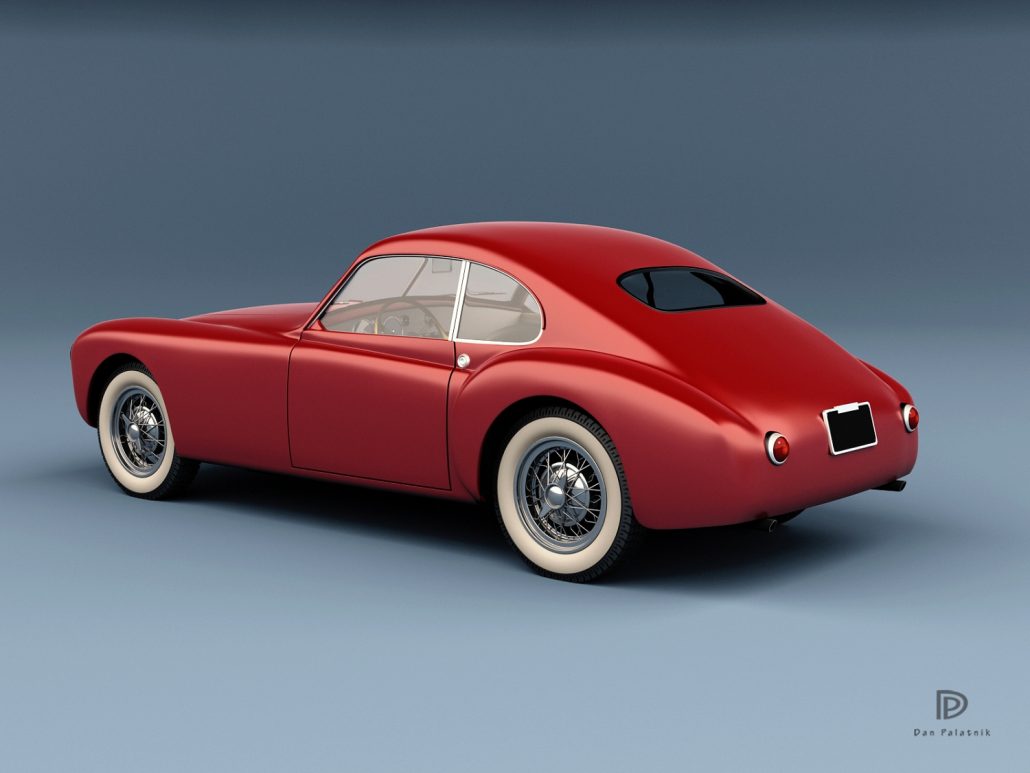 We’re also planning to create a second version of the Allied as did Burke and his team – a roadster. See below for a vintage photo of an Allied Swallow roadster and Dan Palatnik’s renderings of a finished car.
We’re also planning to create a second version of the Allied as did Burke and his team – a roadster. See below for a vintage photo of an Allied Swallow roadster and Dan Palatnik’s renderings of a finished car.
Summary:
When we finish the mold for the Allied Swallow, we’ll have molds for 7 vintage bodies in the can. Currently we have 4 bodies which have a 99″ wheelbase (about the size of a vintage Jaguar XK 120). These include the Byers SR-100, Sorrell SR-100, Bangert Manta Ray and Allied Blackhawk. Our other 2 bodies are about the size of an MG and include the CRV Piranha and the Covington Tiburon Coupe. The 7th mold will be for the Allied “Cisitalia” Swallow we’re discussing today.
Here are some related articles about some of the new bodies and sports cars we’ve brought to market:
Click here to view Autoweeks article on our first built Byers SR-100 sports car
Click here to view Hemmings story on our larger Allied Cisitalia body / sports car – the Blackhawk
Click here to view Hemmings story on our Byers SR-100 body / sports car
The Allied Swallow body has a 94 inch wheelbase and fits nicely on a vintage MG chassis or similar, and we’ll post additional information to share as we make progress. And for those of you wanting to learn more about the history of Allied Swallow sports cars in America:
Click here to learn more about Allied Sports Cars and Bill Burke
Hope you enjoyed the story, and remember…
The adventure continues here at Undiscovered Classics.
Geoff

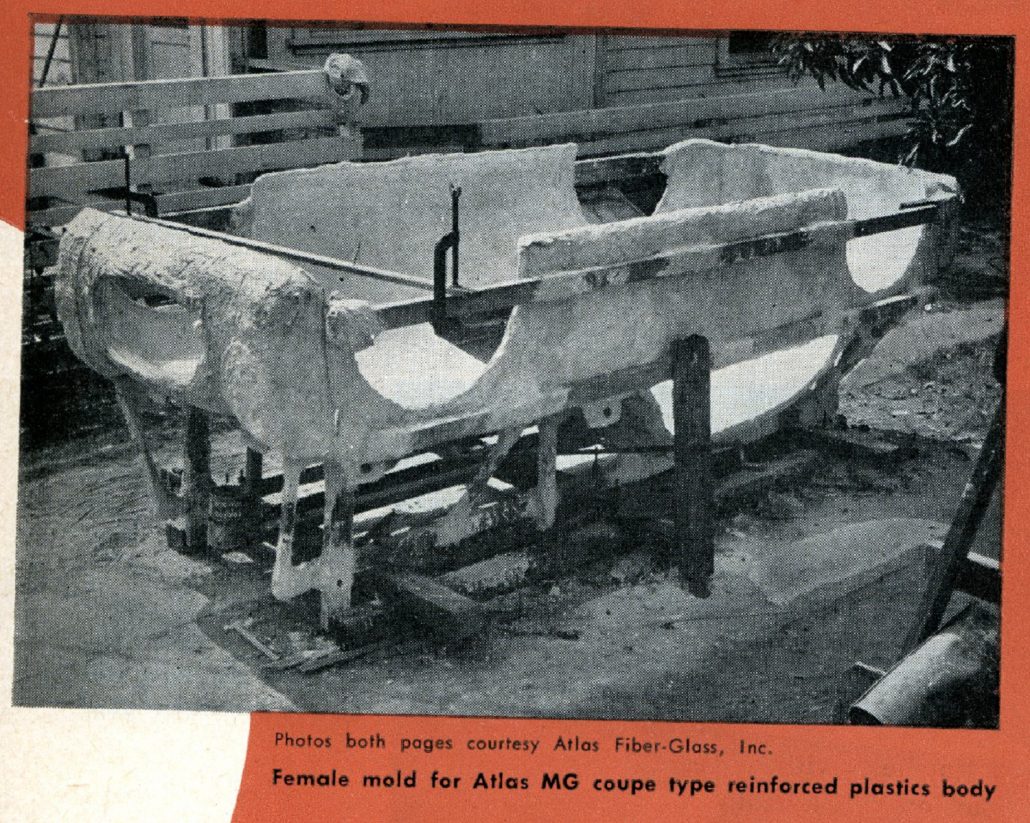
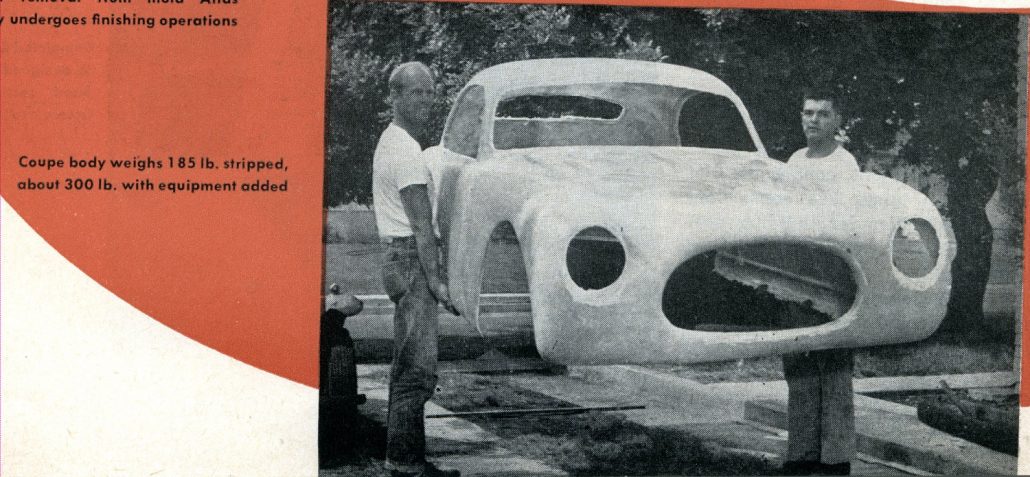
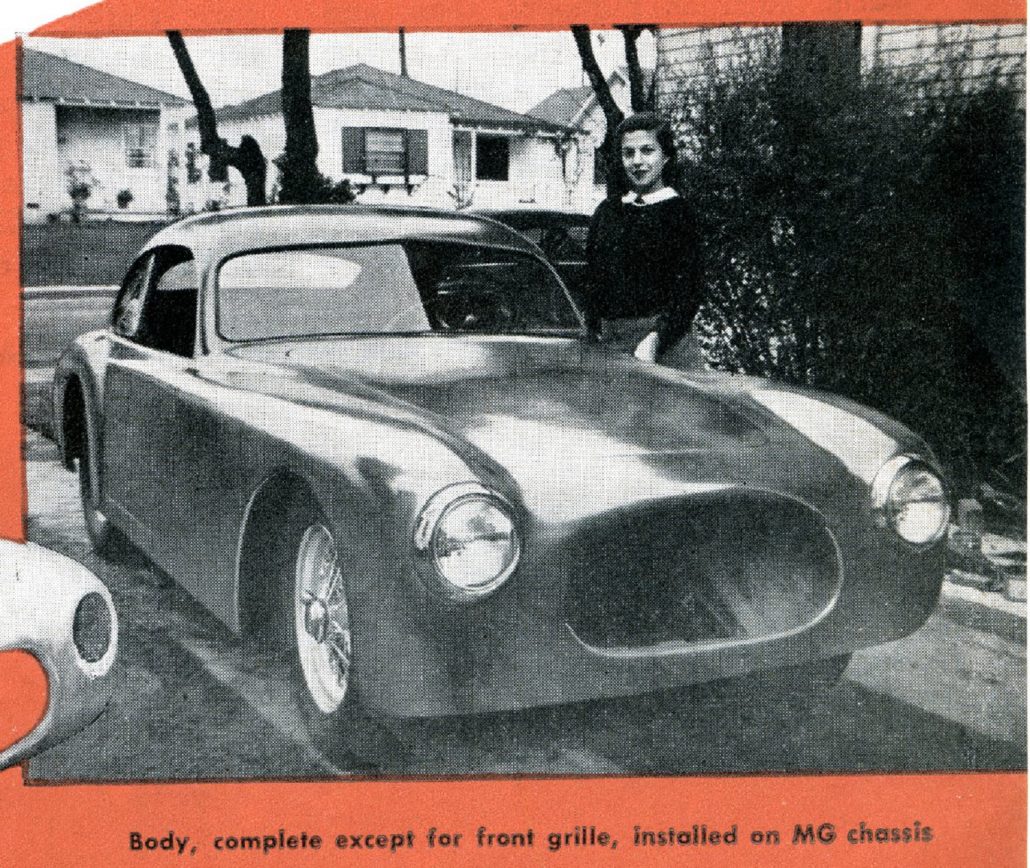

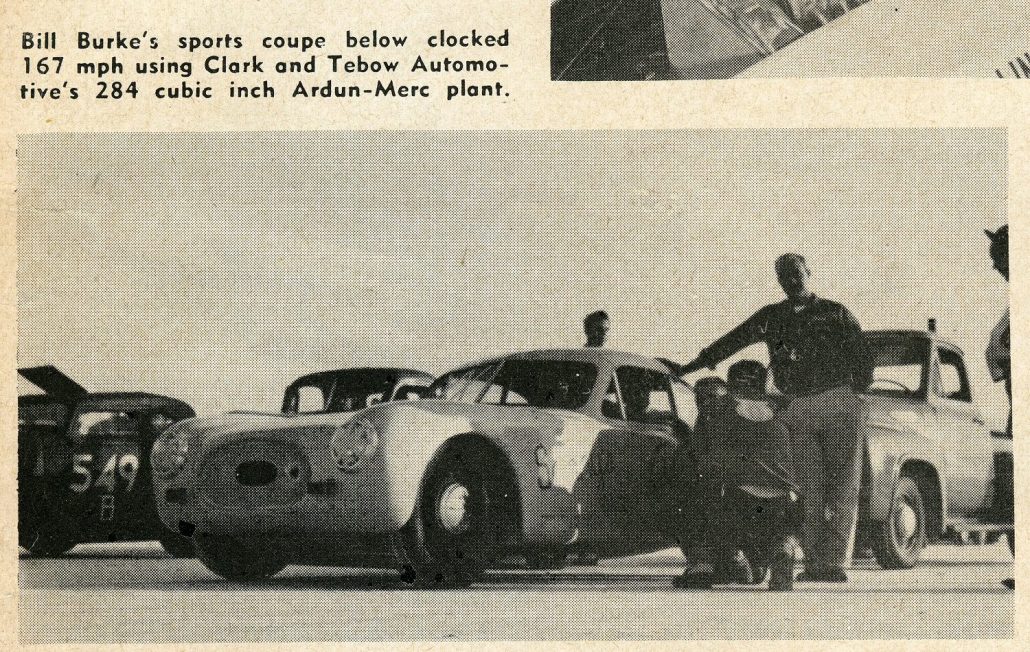
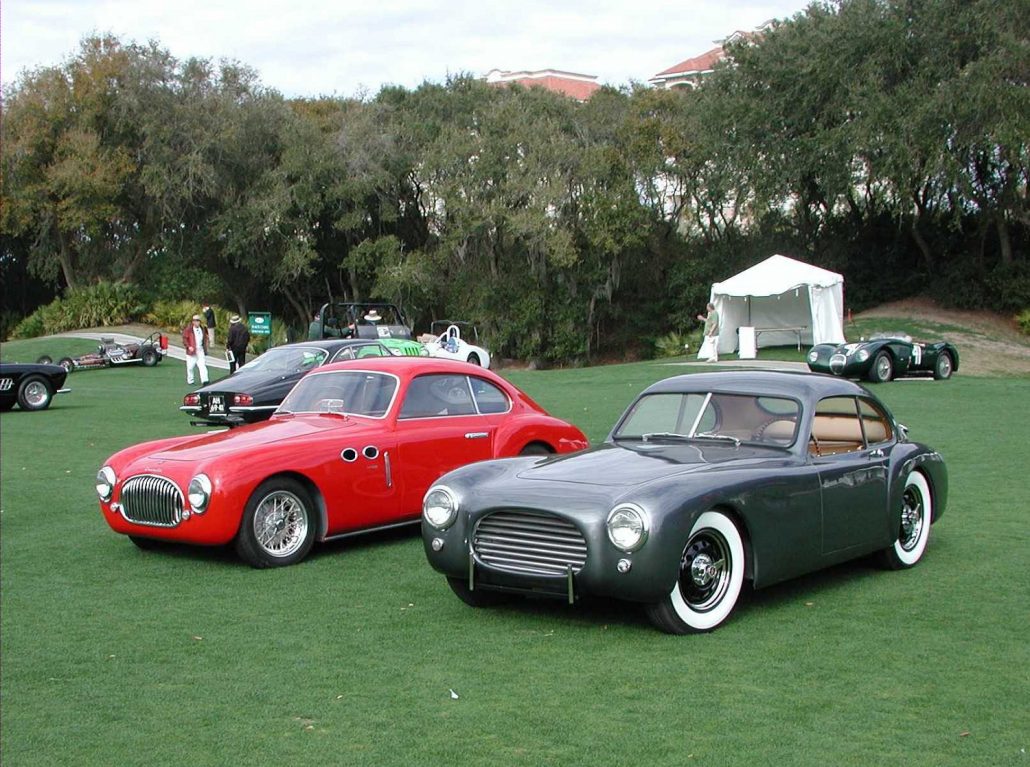

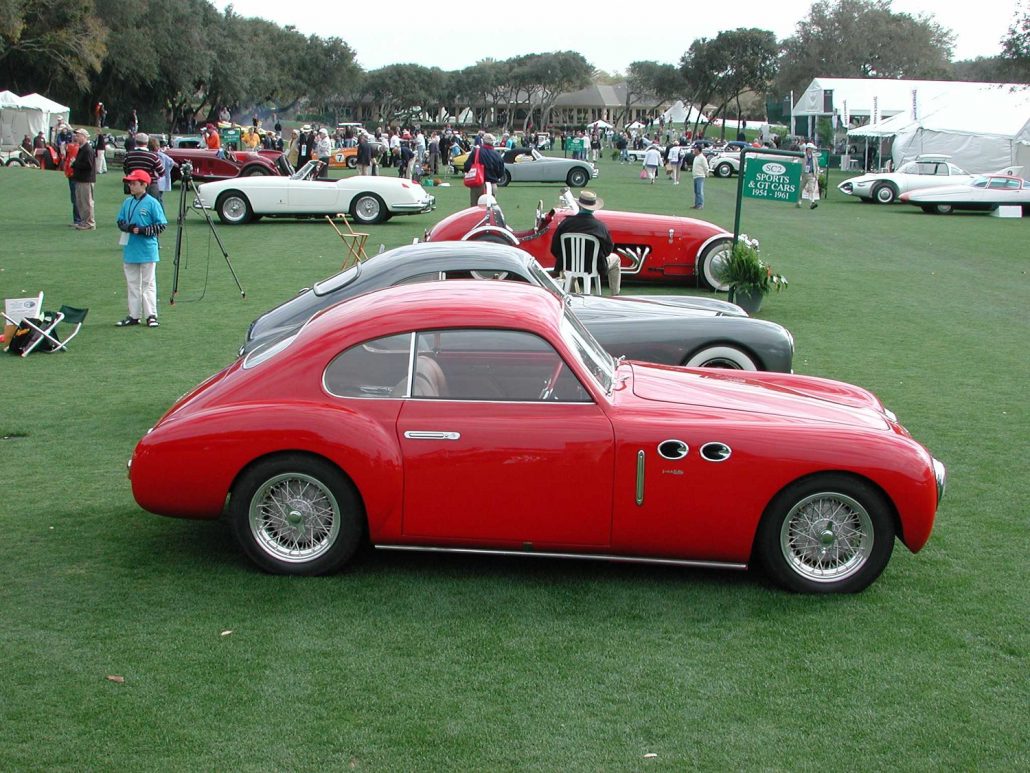
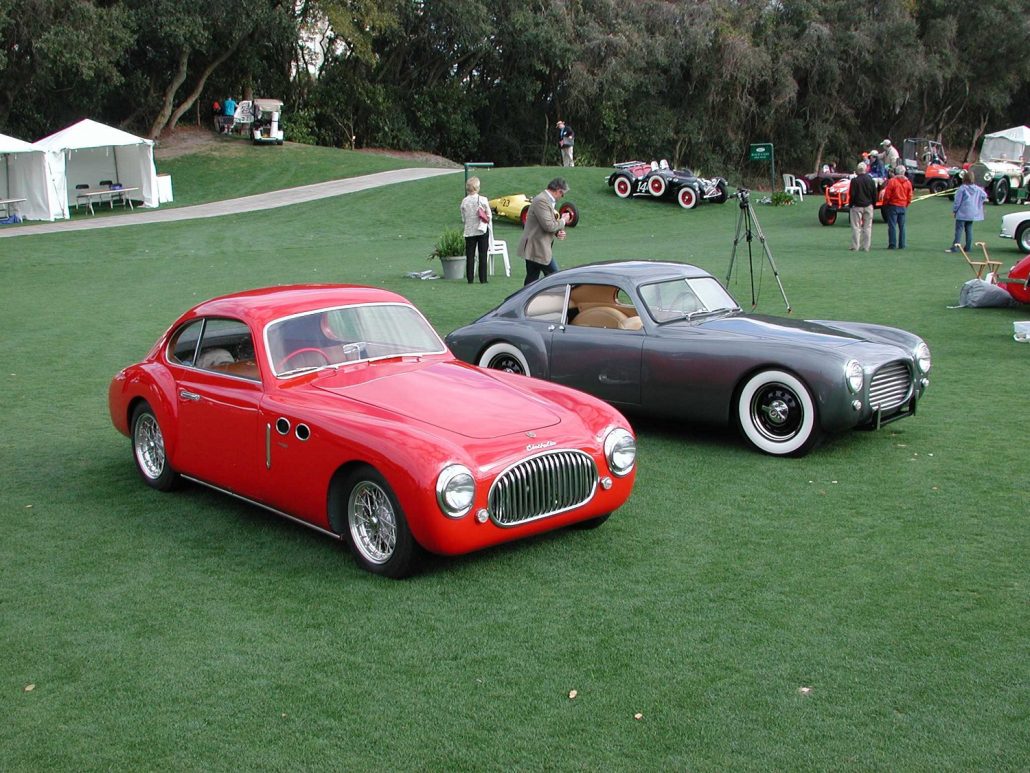

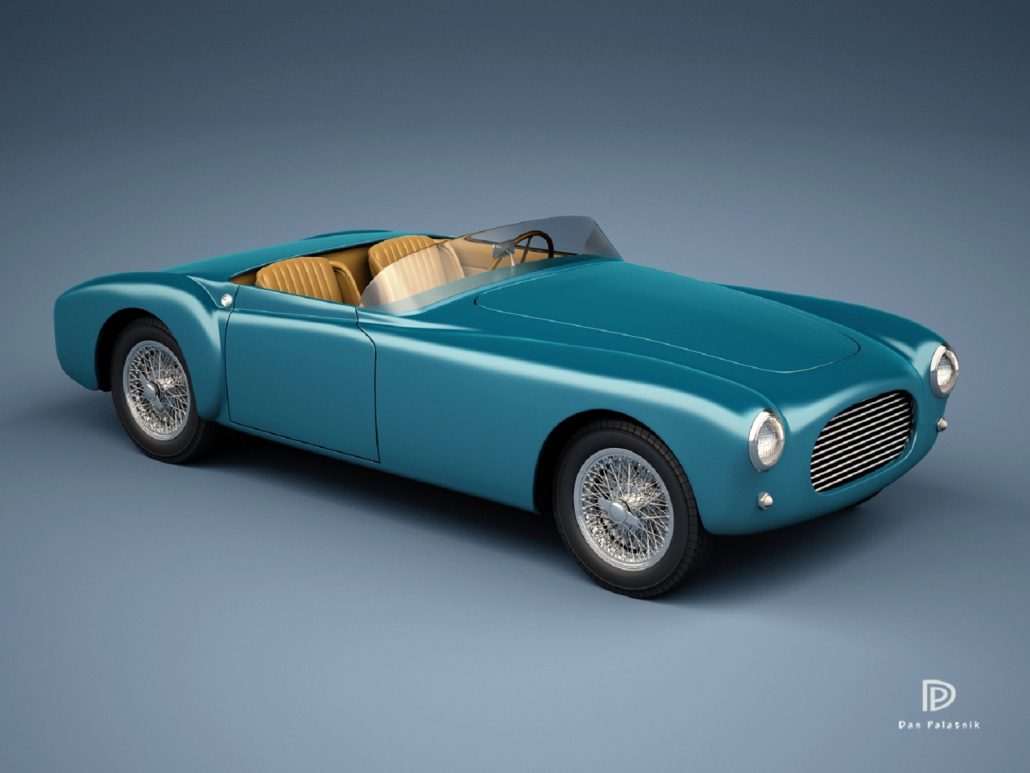
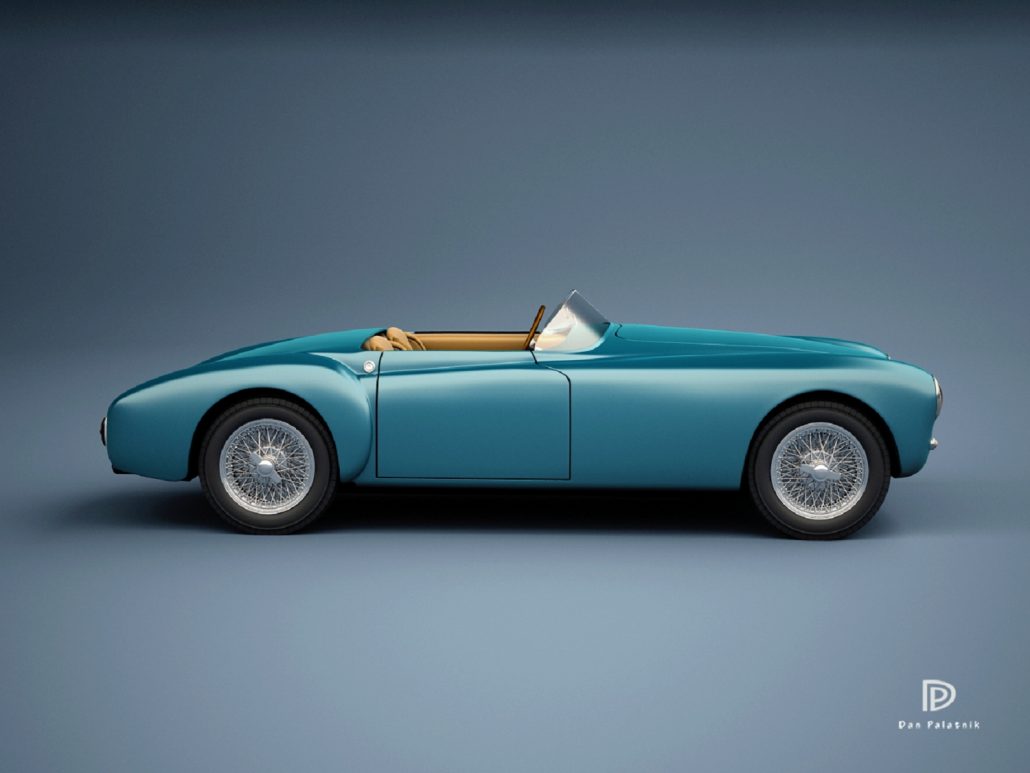
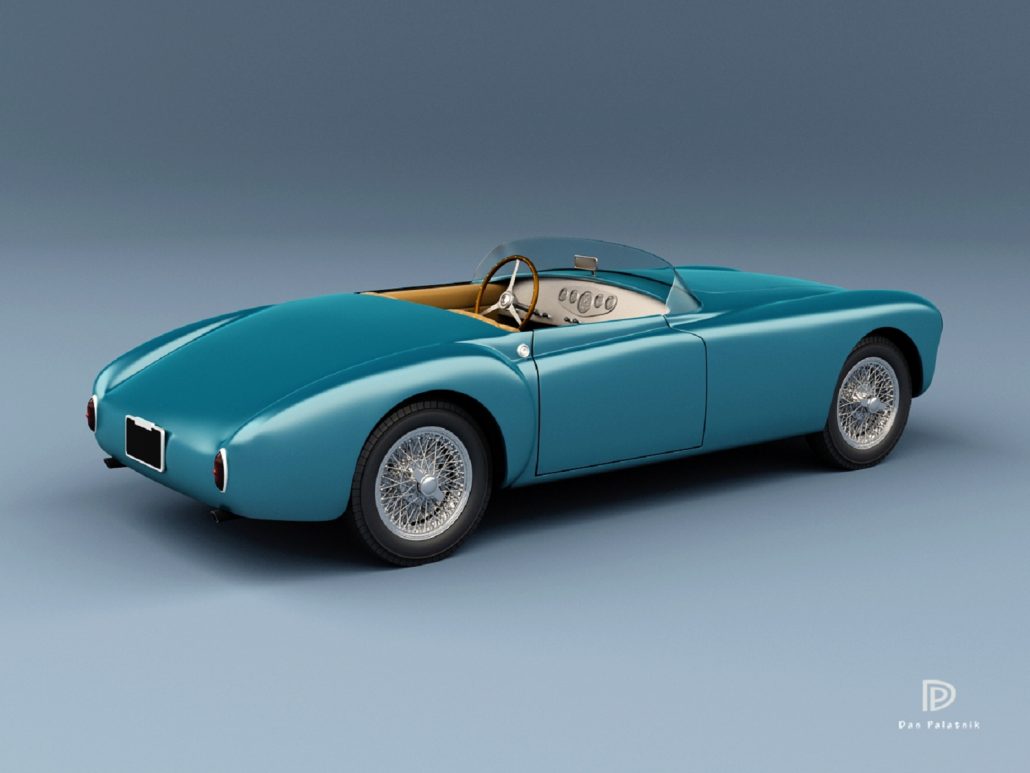
Been a long time since the last comment. That scares me. I think the Allied Swallow Coupe needs at least 1 frame designed that fits the front and rear sub-frames and engine/trans of a 1st gen Miata. Its the right wheelbase. Seeing a Coupe built with all time period parts would be wonderful, but the Miata driveline could make ownership affordable for more of us. I have one ready to rust in 2.
An Allied Swallow Coupe would be perfection.
The article on the Bill Burke belly tanks reminded me of a fun day at World of Speed back when Don Cash was handing out timing slips. He would collect a who’s who of old rodders there and of course the stories were wild. Wally Parks was there one day and the subject of Bill Burke’s builds came up. Wally laughed and claimed he never drove one of Bill’s cars when the run didn’t end up with a fire in the half inch of oil sloshing around in the bottom of the body. Things got better when Steve got old enough to clean up the spills. By then Bill would gripe about the engine location in the stretched RX7 body. He swore the next build would have the back spark plugs in a more accessible location because he was getting too old to do the gyrations necessary to reach them. No one mentions the collection of small mongrel dogs Bill would have in the enclosed trailer. They let him know every time someone new came around the pit.
You’ll note that some of the Cisitalias had two flat panes of windscreen glass while others had a curved single-piece windscreen. The Allied was made from the earlier model with the flat pane glass (thankfully!).
Not so apparent now but the Cisitalia was a ground-breaking design in it’s day; one of the first cars where the fenders and hood were on the same plane. If ever a design begged to have a mold pulled off it the Cisitalia was it. One question re the re-pop though: why not design it to accomodate a curved glass windshield like the original car? Obviously, the Allied/Atlas car utilized flat glass in response to cost/availability concerns but some 70 years latter a suitable curved windshield is probably a lot easier to come by.
This is wonderfull news, since I read some years ago on Undiscovered Classics about the Swallow body
I wanted one . Amazingly, now this is may be possible. Hope to hear more from this fantastic project.
Thanks Geoff
Frans Thys/Belgium
Time to dig out a Singer 4AD frame and drive train ready for either the Coupe or Roadster body to create something beautiful that could have been done back in the day (and was!) Amazing project Geoff!
I think I actually like the Allied Swallow better. The proportions make it look just a bit slippier.
I’d love to put it on a Fiat 124 chassis.
Very pretty car, with the perfect chassis.
A replica with modern adjustable chassis and a SBF would fantastic.
Geoff
The Cisitila / Sawllow design is a timeless beauty.
You and Your team’s dedication to preserving this rare automotive history is fantastic !
I’ve always appreciated how these early cars were creatively “engineered and built” by owners ,not just ordered to be assembled from all new parts as most are today.
Viva la fiberglass ! Marty
Fantastic Geoff. If ever a classic deserved to be resuscitated, this is it.